공정 세팅
프로빙을 사용한 자동화된 세팅은 수동 방식보다 최대 10배 빠를 수 있습니다.
Productive Process Pyramid™의 공정 세팅 계층에 있는 제어 기능은 절삭이 시작되기 전에 기계, 부품 및 툴 간의 관계를 설정합니다. 이러한 자동화된 예측적 제어로 첫 번째 절삭이 정확히 이루어지게 됩니다.
첫 번째 절삭이 정확히 이루어지도록 보장
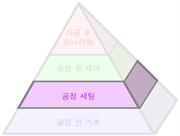 피라미드의 공정 세팅 계층은 부품 위치, 툴 크기, 기계에서의 오프셋 등 변이의 원인을 처리함으로써 가공 작업이 실제 부품 위치에 맞게 이루어지도록 지원합니다.
피라미드의 공정 세팅 계층은 부품 위치, 툴 크기, 기계에서의 오프셋 등 변이의 원인을 처리함으로써 가공 작업이 실제 부품 위치에 맞게 이루어지도록 지원합니다.
이러한 예측적 제어는 금속 절삭 시작 직전에 적용됩니다.
툴 세팅은 다음을 설정합니다.
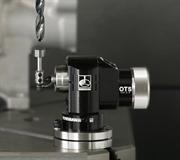 높이 오프셋을 설정하고 길이가 지정된 공차 내 값인지 확인하기 위해 스핀들 게이지 라인을 기준으로 한 길이
높이 오프셋을 설정하고 길이가 지정된 공차 내 값인지 확인하기 위해 스핀들 게이지 라인을 기준으로 한 길이- 툴 크기 오프셋 설정을 위해 회전 시 직경
공작물 세팅은 다음을 설정합니다...
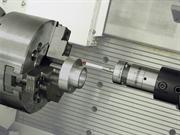 올바른 NC 프로그램 선택을 위한 구성 요소 식별
올바른 NC 프로그램 선택을 위한 구성 요소 식별- 공작물 좌표계(WCS) 설정을 위한 데이터 기능 위치
- 스톡 조건 및 황삭 시퀀스 결정을 위한 빌릿/구성 요소 크기
- 좌표 회전 설정을 위한 구성 요소 방향(기계 축에 상대적)
기계 세팅은 다음을 설정합니다.
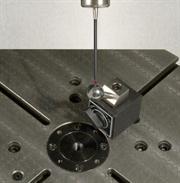 회전축 정렬, 공작물 위치를 설정하고 고정해주는 인덱서 및 고정구
회전축 정렬, 공작물 위치를 설정하고 고정해주는 인덱서 및 고정구- 인덱서의 회전 중심 위치 및/또는 공작물 요소에서의 기준 지점
예측적 제어
프로빙을 사용한 자동화된 세팅은 수동 방법보다 최대 10배 더 빠르므로 금속 절삭에 더 많은 시간을 할애할 수 있습니다.
또한 프로빙 예측이 가능합니다. 즉, 세팅에 어느 정도 시간이 걸리는지 알 수 있어 그에 따른 적절한 계획이 가능합니다.
기계상 프로빙을 사용하는 세팅 공정은 완벽히 프로그램 방식으로 제어가 가능하므로 숙련된 작업자가 더 이상 측정이나 계산 및 입력 오프셋 변경에 투입될 필요가 없습니다.
Renishaw의 공작물 검사 프로브, 툴 세팅기 및 Productivity+™ 소프트웨어는 금속 절삭 작업의 반복 가능한 빠른 자동 셋업을 위한 필수 툴입니다.
생산적인 공정 패턴
-
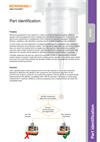 Educational article: (AP200) Productive Process Pattern: Part identification [en]
Educational article: (AP200) Productive Process Pattern: Part identification [en]
Productive Process Pattern™ from the process setting layer of the Productive Process Pyramid™. Use a workpiece inspection probe to take measurements on the raw material (or previously machined features) to determine the identity of the component, the component alignment on the machine tool, and/or to check for non-conforming material.
-
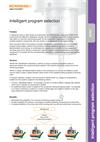 Educational article: (AP201) Productive Process Pattern: Intelligent program selection [en]
Educational article: (AP201) Productive Process Pattern: Intelligent program selection [en]
Productive Process Pattern™ from the process setting layer of the Productive Process Pyramid™. Use a workpiece inspection probe to determine whether the component blank loaded in the machine tool is the correct one for the machining program. Where a unique, identifiable feature exists on the component (or one can be added) a probe may be used to make a logical decision about which of the available cutting programs should be used.
-
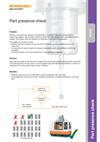 Educational article: (AP202) Productive Process Pattern: Part presence check [en]
Educational article: (AP202) Productive Process Pattern: Part presence check [en]
Productive Process Pattern™ from the process setting layer of the Productive Process Pyramid™. Use a workpiece inspection probe to identify which components are actually present and should be machined. The probing results can be used to control program logic that determines whether to machine a component or to skip machining if no part is present.
-
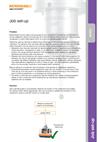 Educational article: (AP203) Productive Process Pattern: Job set-up [en]
Educational article: (AP203) Productive Process Pattern: Job set-up [en]
Productive Process Pattern™ from the process setting layer of the Productive Process Pyramid™. Use a workpiece inspection probe to automatically measure the location of the component and update the relevant offset. Where appropriate, also use the probe to update the orientation of the component using a controller function or a rotary axis.
-
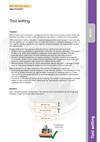 Educational article: (AP204) Productive Process Pattern: Tool setting [en]
Educational article: (AP204) Productive Process Pattern: Tool setting [en]
Productive Process Pattern™ from the process setting layer of the Productive Process Pyramid™. Use a tool setting probe mounted within the machine tool to automatically set the length and diameter of each tool before machining begins.
-
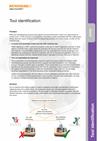 Educational article: (AP205) Productive Process Pattern: Tool identification [en]
Educational article: (AP205) Productive Process Pattern: Tool identification [en]
Productive Process Pattern™ from the process setting layer of the Productive Process Pyramid™. An on-machine tool setting system is used to establish tool length and diameter offsets when replacing tools. As a safety check, the measured values are compared against reference dimensions with a tolerance applied: if the tool length or diameter deviation is greater than the allowed tolerance, the process will stop safely before any machining takes place or any damage can occur.
-
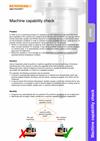 Educational article: (AP206) Productive Process Pattern: Machine capability check [en]
Educational article: (AP206) Productive Process Pattern: Machine capability check [en]
Productive Process Pattern™ from the process setting layer of the Productive Process Pyramid™. Use a workpiece inspection probe to perform a machine capability test before machining. Commence machining only if the machine is within the capability limits defined for the component. Measuring known reference features shows the machine is capable of positioning itself accurately and repeatably, or if there is a capability problem.
-
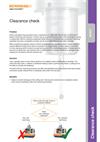 Educational article: (AP207) Productive Process Pattern: Clearance check [en]
Educational article: (AP207) Productive Process Pattern: Clearance check [en]
Productive Process Pattern™ from the process setting layer of the Productive Process Pyramid™. Use a workpiece inspection probe to test critical sections of a toolpath where interference is possible. The probe will stop when a collision is detected making it safe to perform this check: a cutting tool is not able to provide this feedback. Proceed with the machining process only after all potentially hazardous areas have been tested and probe results indicate that no obstacles exist within the tool path.
-
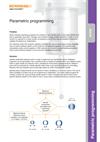 Educational article: (AP208) Productive Process Pattern: Parametric programming [en]
Educational article: (AP208) Productive Process Pattern: Parametric programming [en]
Productive Process Pattern™ from the process setting layer of the Productive Process Pyramid™. Use a workpiece inspection probe to measure features which vary between parts within a given family and allocate macro variables for those feature measurements. Different parts can be produced by a family-specific rather than a part-specific program by controlling features that vary between parts using logic based on probe measurement results.
-
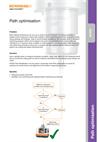 Educational article: (AP209) Productive Process Pattern: Path optimisation [en]
Educational article: (AP209) Productive Process Pattern: Path optimisation [en]
Productive Process Pattern™ from the process setting layer of the Productive Process Pyramid™. Use a workpiece inspection probe to measure workpiece condition. Apply logic based on the measured stock size to control the cutting path so that air cutting is eliminated and machining moves always cut metal.
-
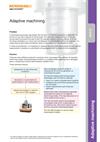 Educational article: (AP210) Productive Process Pattern: Adaptive machining [en]
Educational article: (AP210) Productive Process Pattern: Adaptive machining [en]
A manufacturing process may dictate that the form of a finished component is dependent on the form of the input material for that process. In these circumstances, it is necessary to measure the form of the input component and use the measurement to produce a customised cutting program which is unique to that component.
문서
-
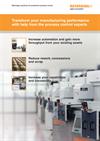 Brochure: Metrology solutions for productive process control [en]
Brochure: Metrology solutions for productive process control [en]
Transform your manufacturing performance with help from the process control experts
-
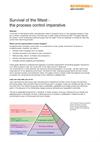 White paper: Survival of the fittest - the process control imperative [en]
White paper: Survival of the fittest - the process control imperative [en]
In tough times, manufacturers focus on reducing their operating costs, but may not be able to afford to spend their way out by buying more productive machinery. With that pathway closed, what are the opportunities for radically reducing costs without replacing existing machines? This paper explores four areas where substantial savings can be found if firms are prepared to change the way they control their machining processes.
-
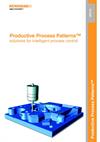 Educational article: (AP010) Productive Process Pattern: Productive Process Patterns™ [en]
Educational article: (AP010) Productive Process Pattern: Productive Process Patterns™ [en]
Introduction to the Productive Process Patterns™ - solutions for intelligent process control within manufacturing













